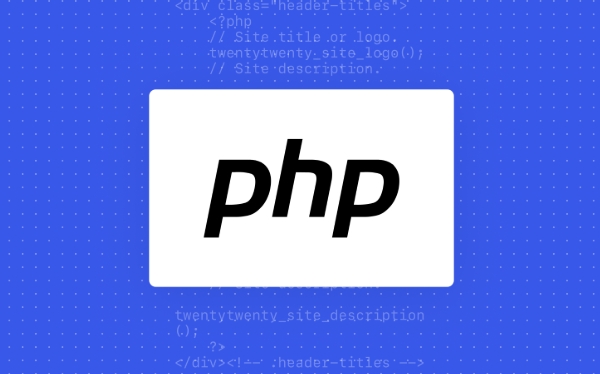To handle invalid dates properly when using strtotime() in PHP, first check the return value of strtotime(), use fallbacks or default dates when appropriate, combine with DateTime::createFromFormat() for stricter validation, and normalize input before passing it to strtotime(). Always validate the result by comparing it to false using === to avoid misinterpreting valid timestamps as errors. Use fallbacks like a default date to prevent script failure, especially in user-submitted forms or log parsing scenarios. For stricter validation, use DateTime::createFromFormat() to enforce expected formats and detect invalid dates like February 30th. Optionally, sanitize input by replacing characters or removing non-date elements before attempting strtotime(), but be cautious not to over-sanitize and create misleading dates.

When dealing with dates in PHP, especially using strtotime(), you might run into issues where the input is not a valid date string. This can lead to unexpected behavior — like returning false or even a wrong timestamp. So how do you handle invalid dates properly when using strtotime()? Here’s how.

Check the Return Value of strtotime()
The first thing to know is that strtotime() returns false if it can't parse the given date string. So always validate the result before proceeding:

$dateStr = 'not a real date';
$timestamp = strtotime($dateStr);
if ($timestamp === false) {
echo 'Invalid date format.';
} else {
echo date('Y-m-d', $timestamp);
}This simple check prevents bugs from propagating further down your logic chain.
A few things to note:

- Always use
=== falsefor comparison. Using== falsecould mistakenly treat a valid timestamp of zero (like 1970-01-01) as an error. - Some malformed strings may still return a timestamp, so be cautious with user input.
Use Fallbacks or Default Dates
Sometimes you don’t want the script to fail completely just because the date was bad. In such cases, you can fall back to a default value:
$dateStr = 'invalid-date-2024';
$timestamp = strtotime($dateStr);
if ($timestamp === false) {
$timestamp = strtotime('2024-01-01'); // fallback to a known good date
}This is useful in scenarios like:
- User-submitted forms where date fields might be optional or incorrectly filled
- Log parsing where some entries might have corrupted timestamps
Just make sure the fallback makes sense in context — blindly falling back to today or a fixed date might hide actual data problems.
Combine with DateTime::createFromFormat() for More Control
If you need stricter validation — say, you expect a specific date format — consider using DateTime::createFromFormat() instead of strtotime().
For example:
$dateStr = '2024/02/30'; // Invalid day
$date = DateTime::createFromFormat('Y/m/d', $dateStr);
if (!$date || $date->format('Y/m/d') !== $dateStr) {
echo 'Date is invalid or not in expected format.';
}This gives you more control over:
- Expected date format
- Exact validation of the output
- Handling edge cases like February 30th or non-existent dates
It's a bit more verbose than strtotime(), but safer when strict formatting matters.
Normalize Input Before Passing to strtotime()
Sometimes the problem isn’t that the date is invalid, but that the format is just slightly off. You can sanitize or reformat the input before trying strtotime():
For instance:
- Replace slashes with dashes:
str_replace('/', '-', $dateStr) - Trim whitespace:
trim($dateStr) - Remove unrecognized parts: e.g., filter out extra text from a mixed string
Example:
$dateStr = '2024/02/29 some extra text';
$dateStr = preg_replace('/[^0-9\/\-:\s]/', '', $dateStr); // remove non-date characters
$timestamp = strtotime($dateStr);Be careful not to over-sanitize and accidentally turn invalid input into misleadingly valid dates.
Handling invalid dates in strtotime() doesn’t have to be tricky. Just remember to always validate the return value, use fallbacks wisely, and consider alternatives like DateTime::createFromFormat() when stricter validation is needed. The key is to anticipate possible errors and handle them gracefully without assuming all inputs are well-formed.
The above is the detailed content of php how to handle invalid date in strtotime. For more information, please follow other related articles on the PHP Chinese website!

Hot AI Tools

Undress AI Tool
Undress images for free

Undresser.AI Undress
AI-powered app for creating realistic nude photos

AI Clothes Remover
Online AI tool for removing clothes from photos.

Clothoff.io
AI clothes remover

Video Face Swap
Swap faces in any video effortlessly with our completely free AI face swap tool!

Hot Article

Hot Tools

Notepad++7.3.1
Easy-to-use and free code editor

SublimeText3 Chinese version
Chinese version, very easy to use

Zend Studio 13.0.1
Powerful PHP integrated development environment

Dreamweaver CS6
Visual web development tools

SublimeText3 Mac version
God-level code editing software (SublimeText3)
 PHP Variable Scope Explained
Jul 17, 2025 am 04:16 AM
PHP Variable Scope Explained
Jul 17, 2025 am 04:16 AM
Common problems and solutions for PHP variable scope include: 1. The global variable cannot be accessed within the function, and it needs to be passed in using the global keyword or parameter; 2. The static variable is declared with static, and it is only initialized once and the value is maintained between multiple calls; 3. Hyperglobal variables such as $_GET and $_POST can be used directly in any scope, but you need to pay attention to safe filtering; 4. Anonymous functions need to introduce parent scope variables through the use keyword, and when modifying external variables, you need to pass a reference. Mastering these rules can help avoid errors and improve code stability.
 How to handle File Uploads securely in PHP?
Jul 08, 2025 am 02:37 AM
How to handle File Uploads securely in PHP?
Jul 08, 2025 am 02:37 AM
To safely handle PHP file uploads, you need to verify the source and type, control the file name and path, set server restrictions, and process media files twice. 1. Verify the upload source to prevent CSRF through token and detect the real MIME type through finfo_file using whitelist control; 2. Rename the file to a random string and determine the extension to store it in a non-Web directory according to the detection type; 3. PHP configuration limits the upload size and temporary directory Nginx/Apache prohibits access to the upload directory; 4. The GD library resaves the pictures to clear potential malicious data.
 Commenting Out Code in PHP
Jul 18, 2025 am 04:57 AM
Commenting Out Code in PHP
Jul 18, 2025 am 04:57 AM
There are three common methods for PHP comment code: 1. Use // or # to block one line of code, and it is recommended to use //; 2. Use /.../ to wrap code blocks with multiple lines, which cannot be nested but can be crossed; 3. Combination skills comments such as using /if(){}/ to control logic blocks, or to improve efficiency with editor shortcut keys, you should pay attention to closing symbols and avoid nesting when using them.
 How Do Generators Work in PHP?
Jul 11, 2025 am 03:12 AM
How Do Generators Work in PHP?
Jul 11, 2025 am 03:12 AM
AgeneratorinPHPisamemory-efficientwaytoiterateoverlargedatasetsbyyieldingvaluesoneatatimeinsteadofreturningthemallatonce.1.Generatorsusetheyieldkeywordtoproducevaluesondemand,reducingmemoryusage.2.Theyareusefulforhandlingbigloops,readinglargefiles,or
 Tips for Writing PHP Comments
Jul 18, 2025 am 04:51 AM
Tips for Writing PHP Comments
Jul 18, 2025 am 04:51 AM
The key to writing PHP comments is to clarify the purpose and specifications. Comments should explain "why" rather than "what was done", avoiding redundancy or too simplicity. 1. Use a unified format, such as docblock (/*/) for class and method descriptions to improve readability and tool compatibility; 2. Emphasize the reasons behind the logic, such as why JS jumps need to be output manually; 3. Add an overview description before complex code, describe the process in steps, and help understand the overall idea; 4. Use TODO and FIXME rationally to mark to-do items and problems to facilitate subsequent tracking and collaboration. Good annotations can reduce communication costs and improve code maintenance efficiency.
 How to access a character in a string by index in PHP
Jul 12, 2025 am 03:15 AM
How to access a character in a string by index in PHP
Jul 12, 2025 am 03:15 AM
In PHP, you can use square brackets or curly braces to obtain string specific index characters, but square brackets are recommended; the index starts from 0, and the access outside the range returns a null value and cannot be assigned a value; mb_substr is required to handle multi-byte characters. For example: $str="hello";echo$str[0]; output h; and Chinese characters such as mb_substr($str,1,1) need to obtain the correct result; in actual applications, the length of the string should be checked before looping, dynamic strings need to be verified for validity, and multilingual projects recommend using multi-byte security functions uniformly.
 Quick PHP Installation Tutorial
Jul 18, 2025 am 04:52 AM
Quick PHP Installation Tutorial
Jul 18, 2025 am 04:52 AM
ToinstallPHPquickly,useXAMPPonWindowsorHomebrewonmacOS.1.OnWindows,downloadandinstallXAMPP,selectcomponents,startApache,andplacefilesinhtdocs.2.Alternatively,manuallyinstallPHPfromphp.netandsetupaserverlikeApache.3.OnmacOS,installHomebrew,thenrun'bre
 Learning PHP: A Beginner's Guide
Jul 18, 2025 am 04:54 AM
Learning PHP: A Beginner's Guide
Jul 18, 2025 am 04:54 AM
TolearnPHPeffectively,startbysettingupalocalserverenvironmentusingtoolslikeXAMPPandacodeeditorlikeVSCode.1)InstallXAMPPforApache,MySQL,andPHP.2)Useacodeeditorforsyntaxsupport.3)TestyoursetupwithasimplePHPfile.Next,learnPHPbasicsincludingvariables,ech






